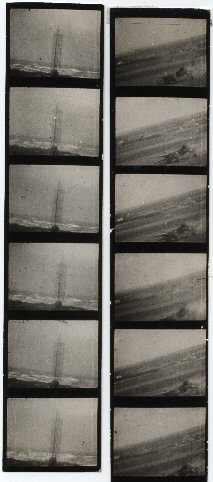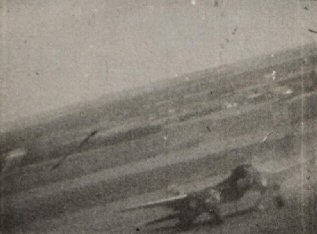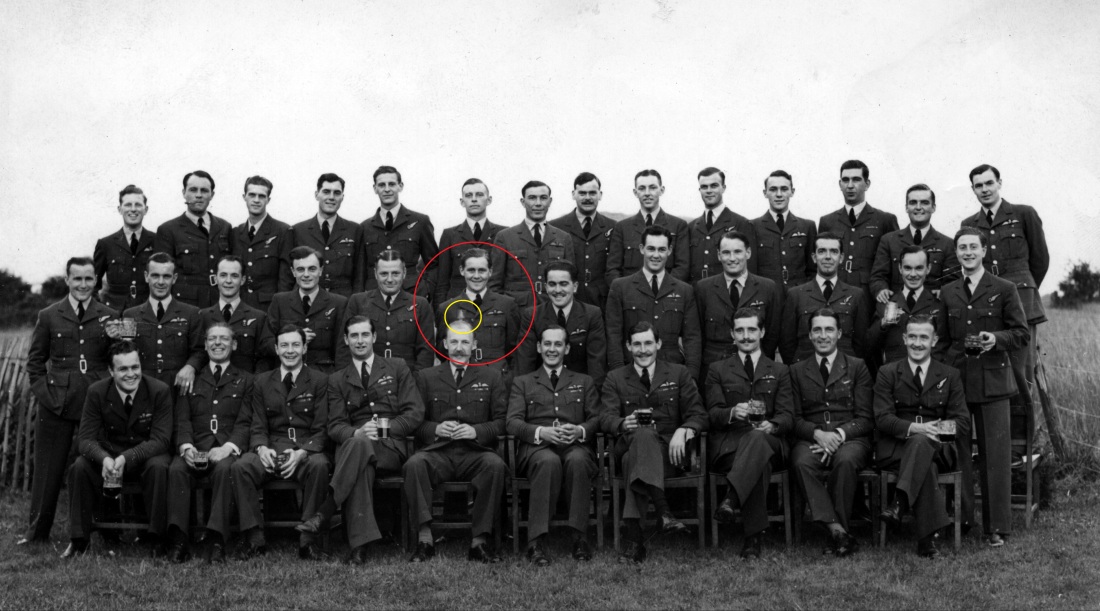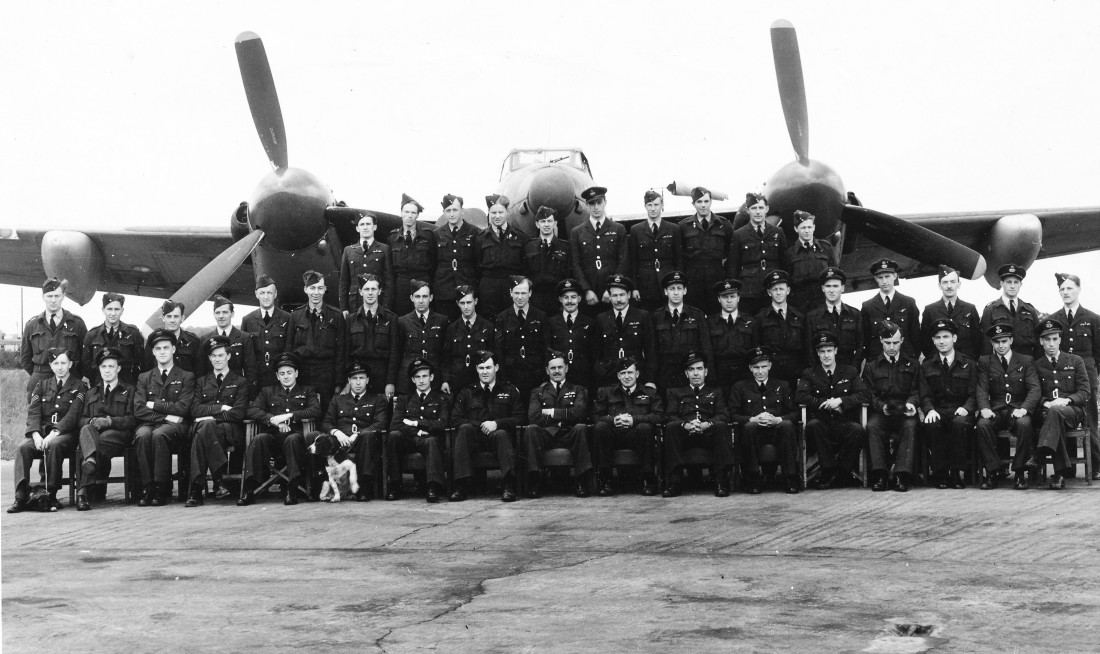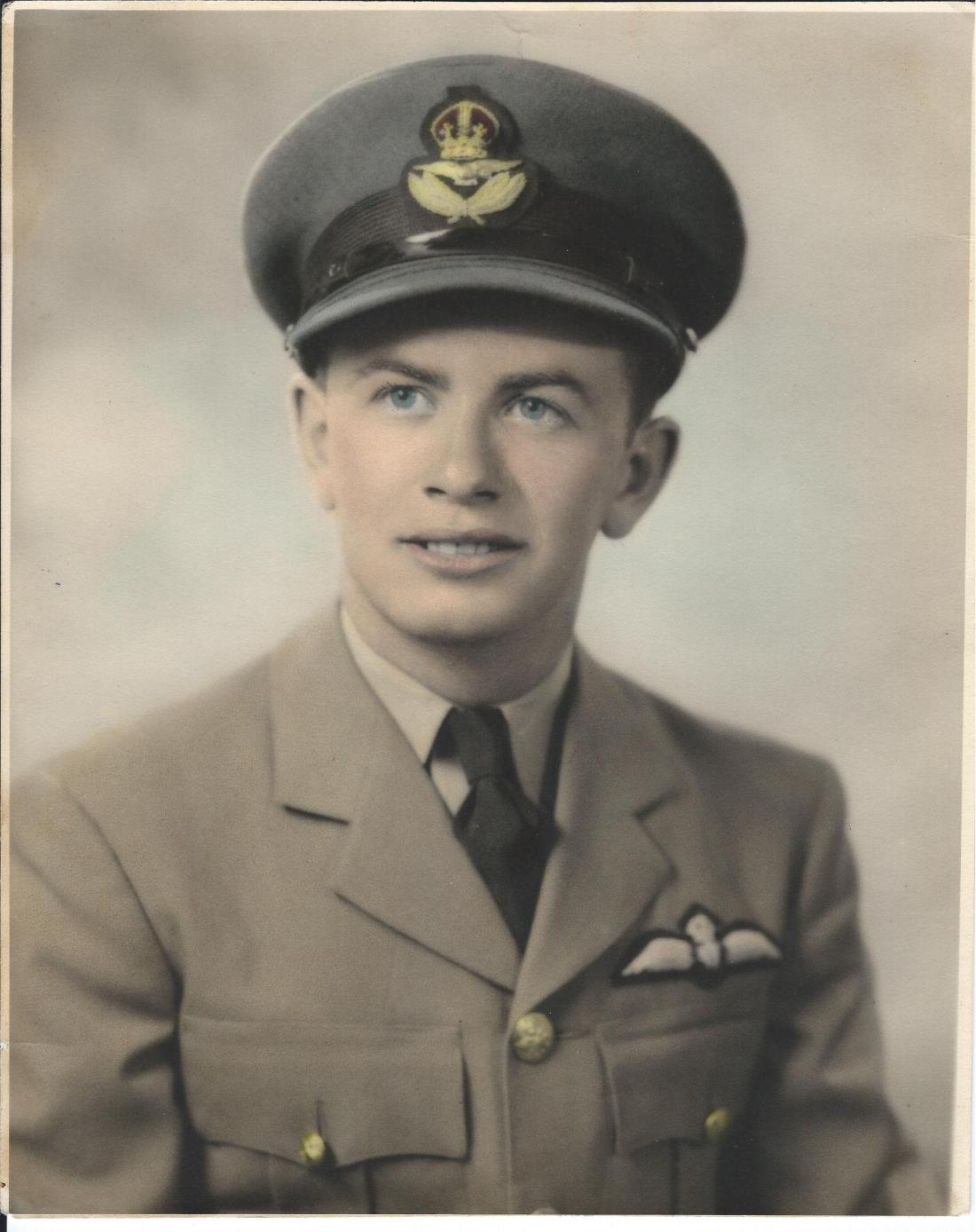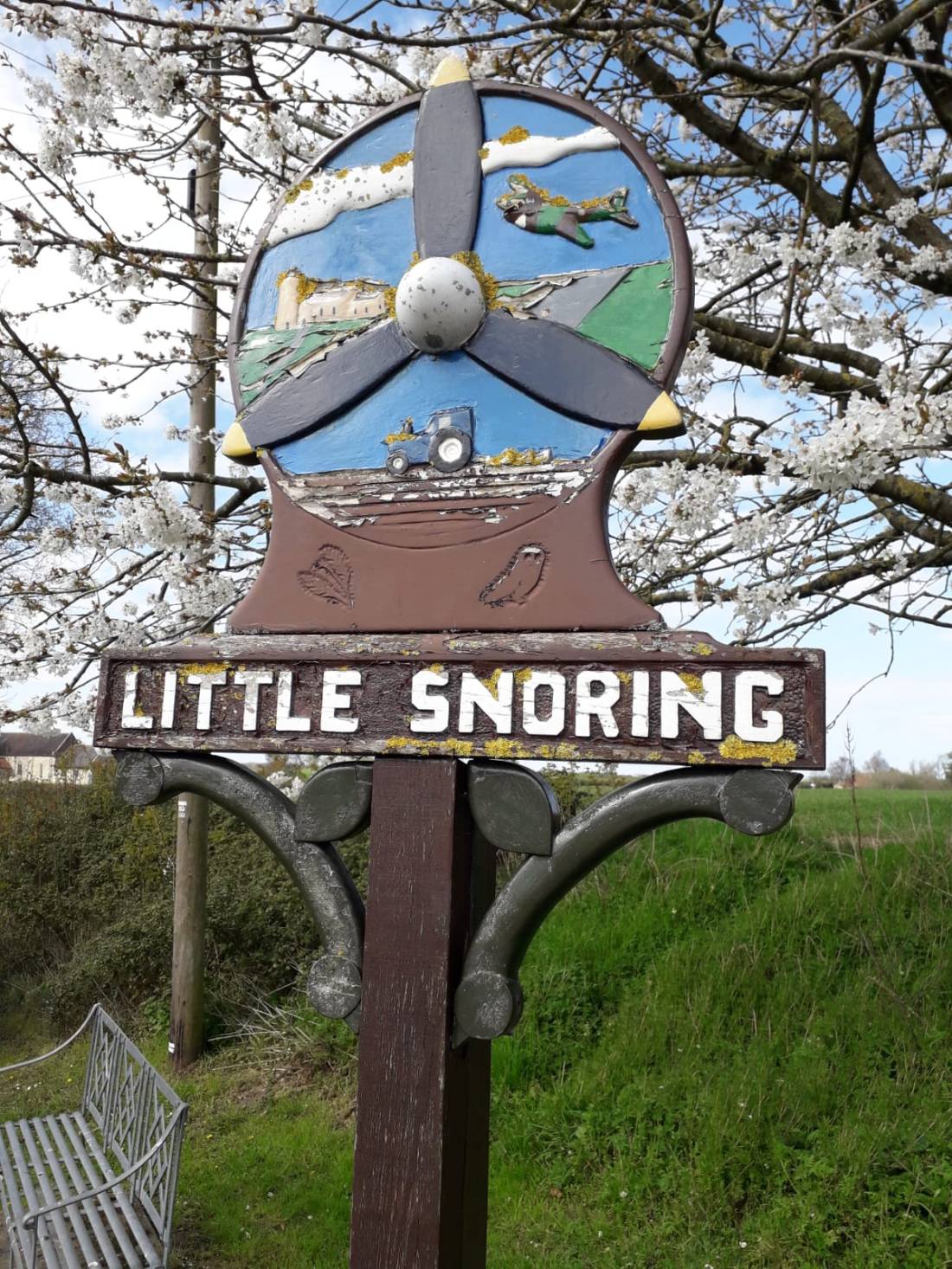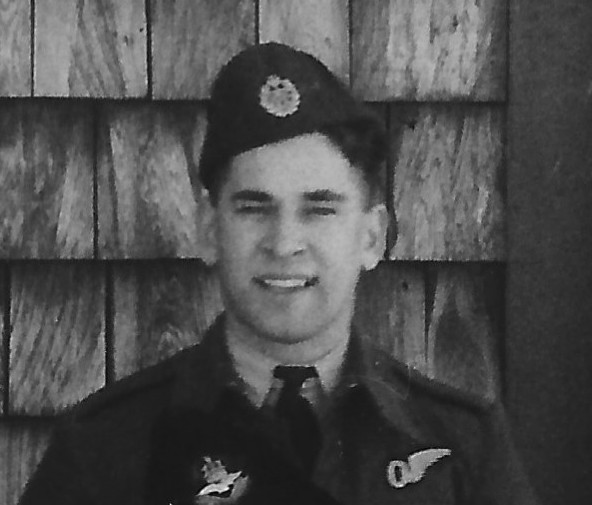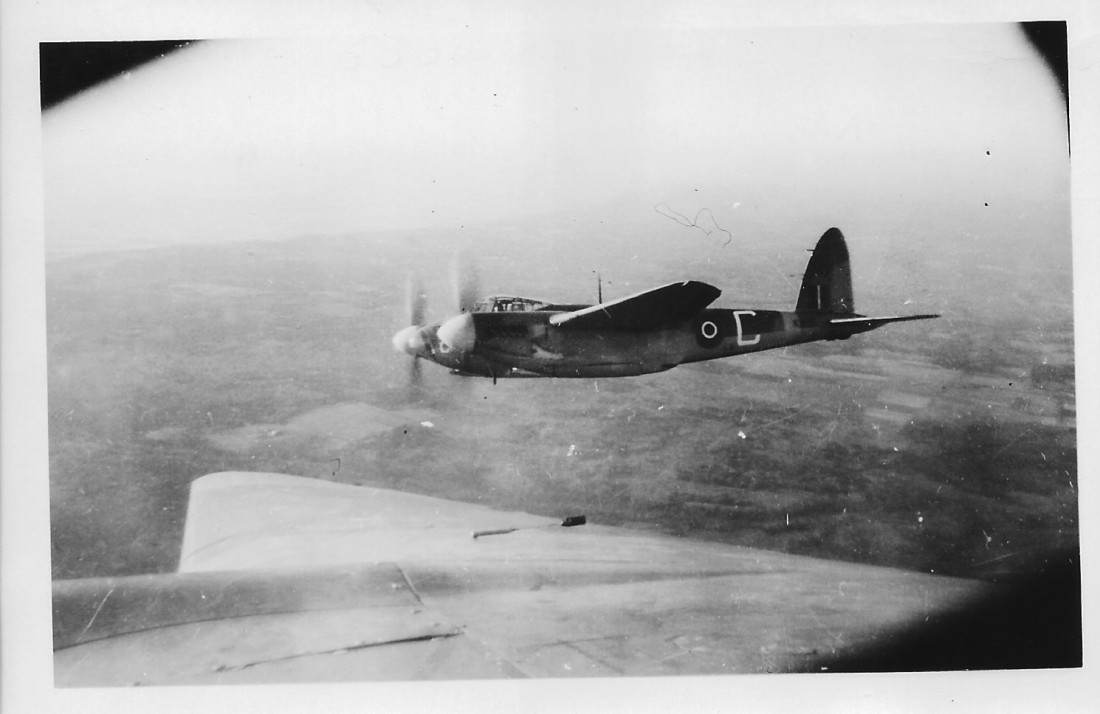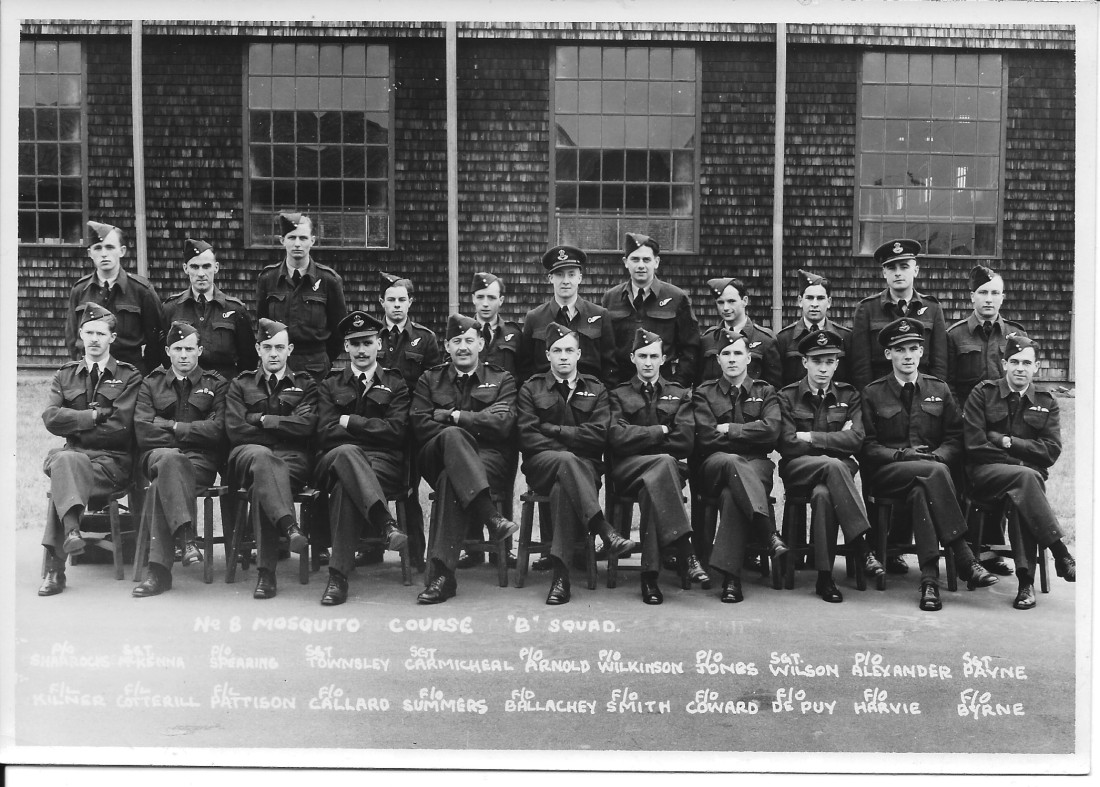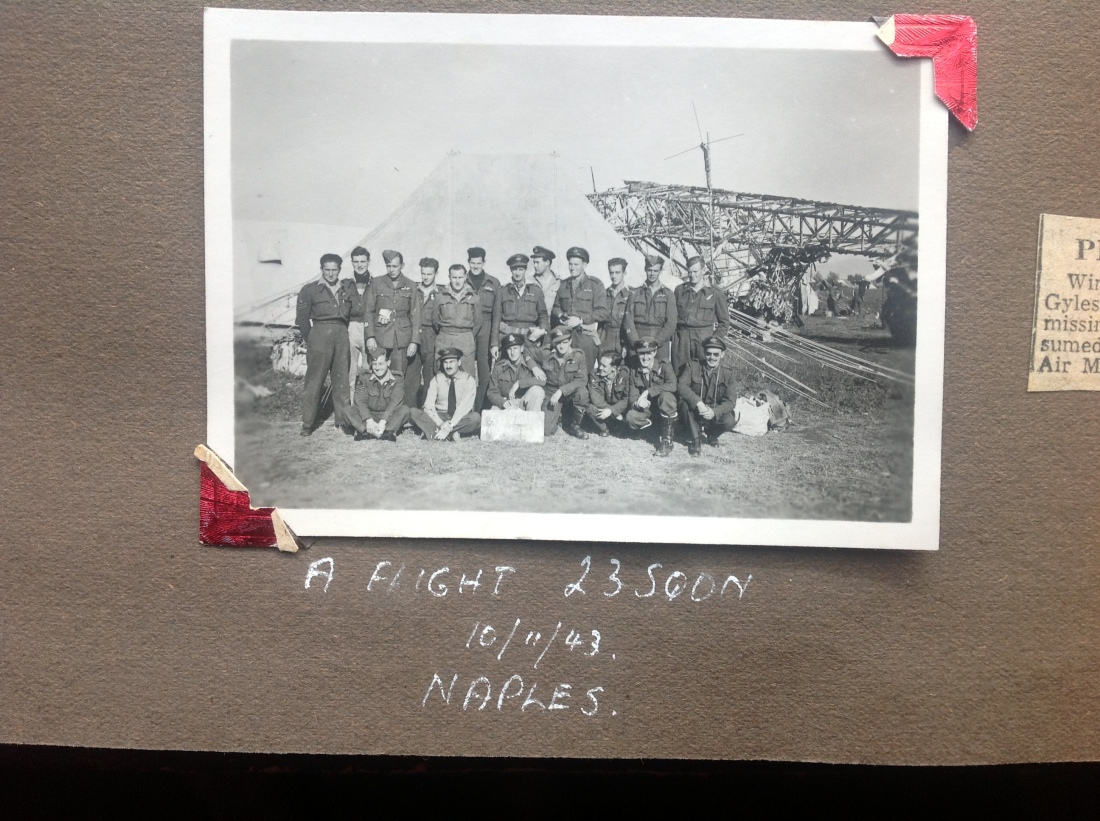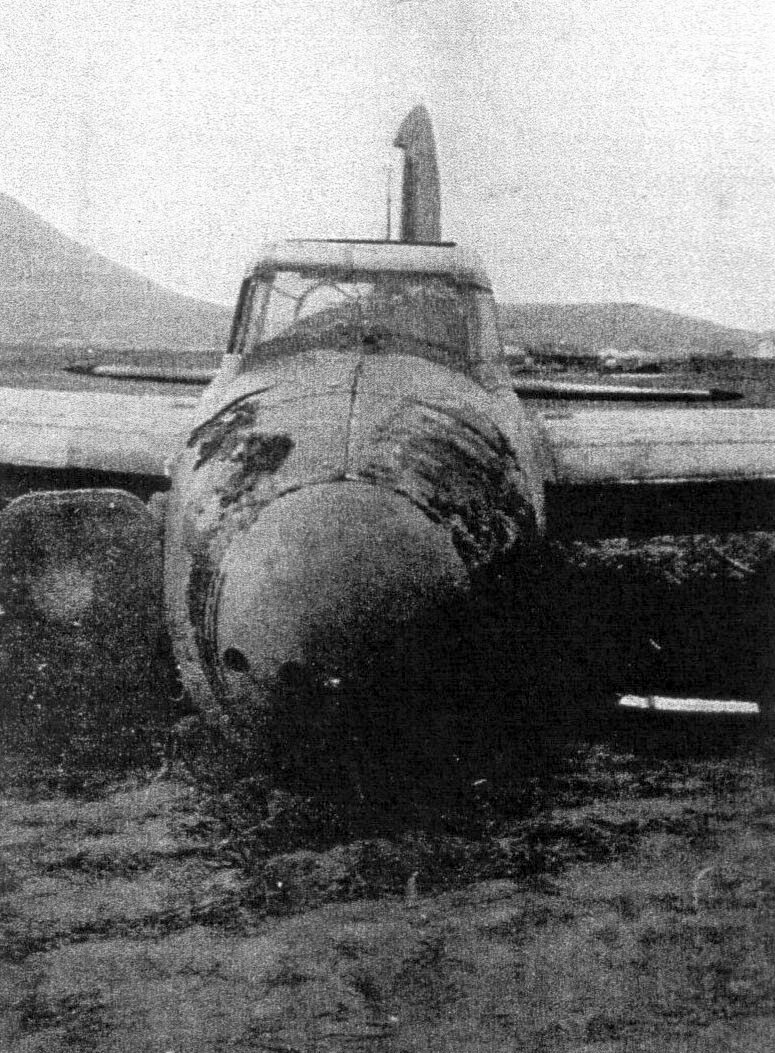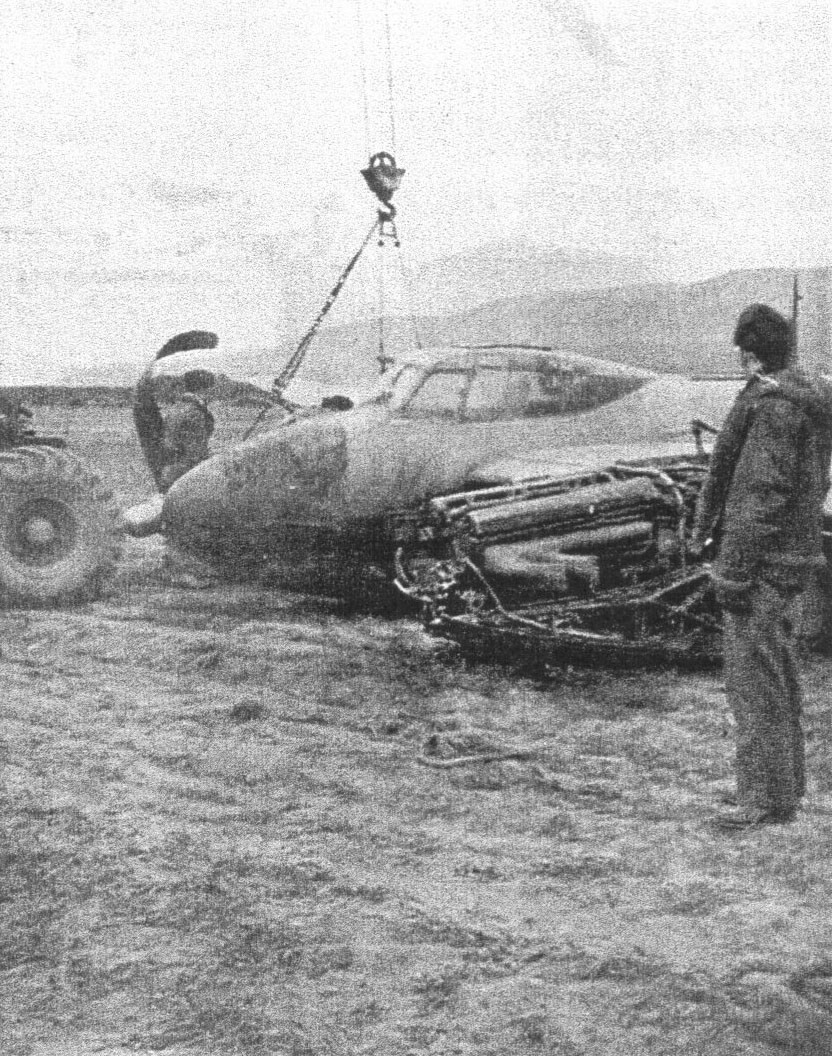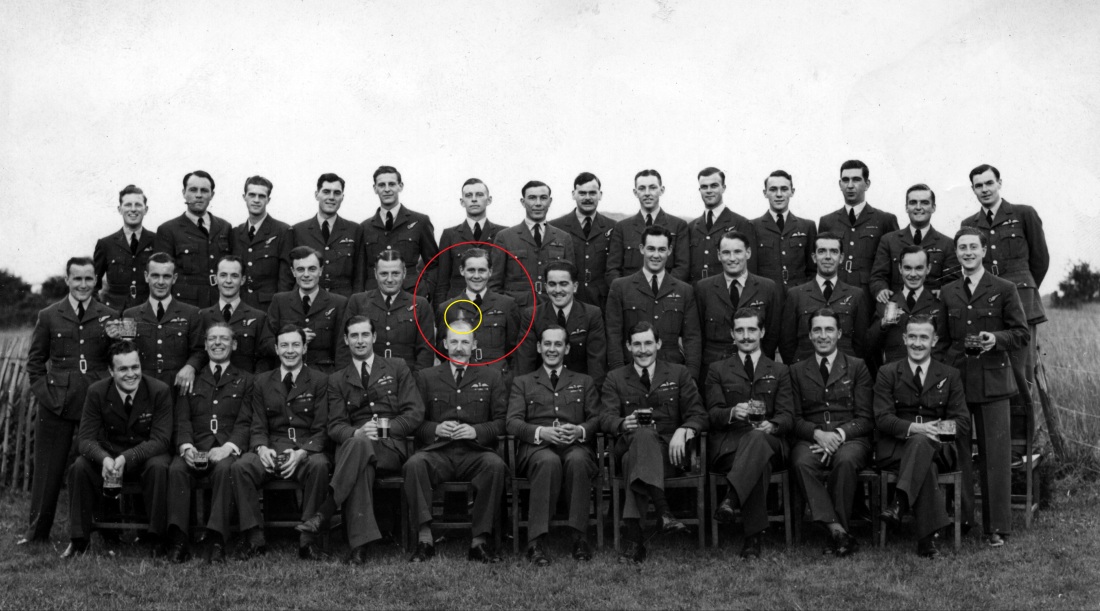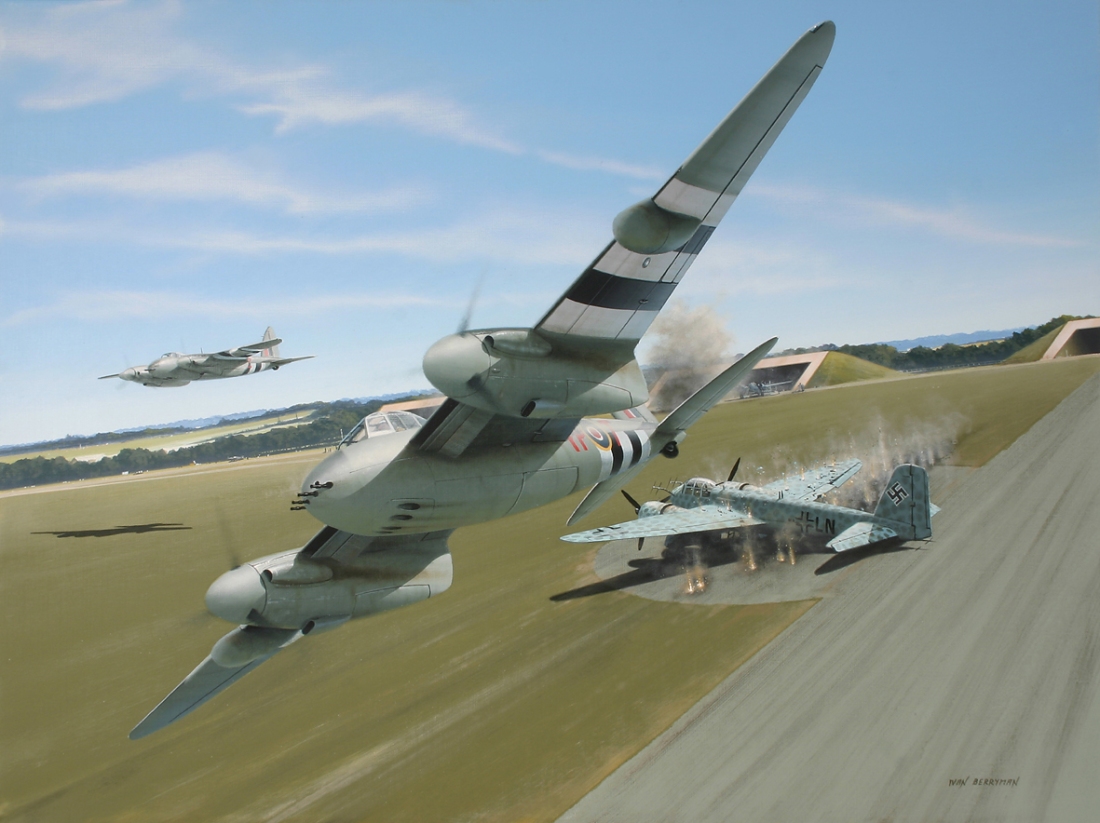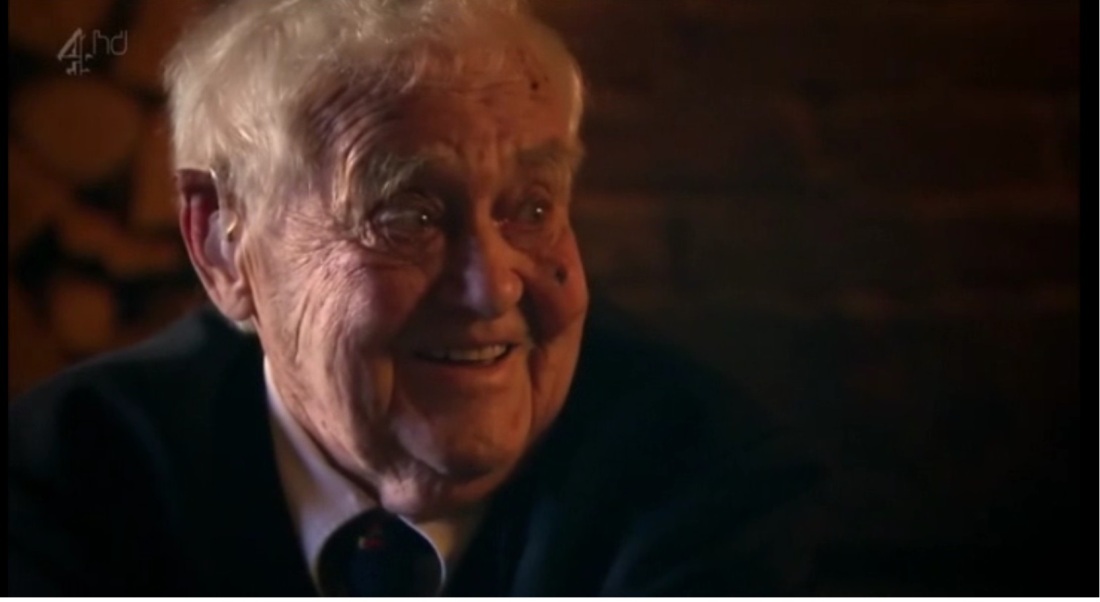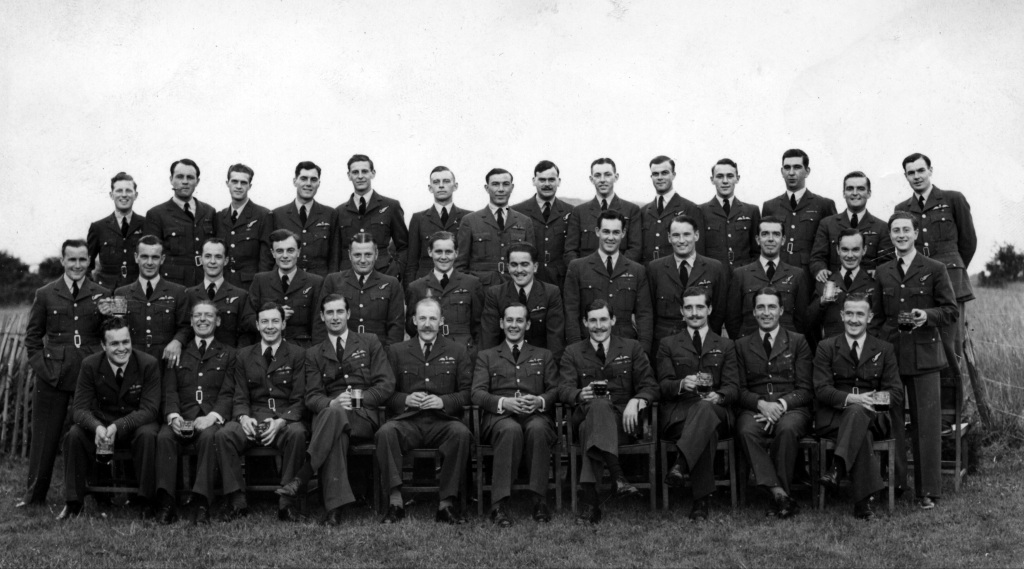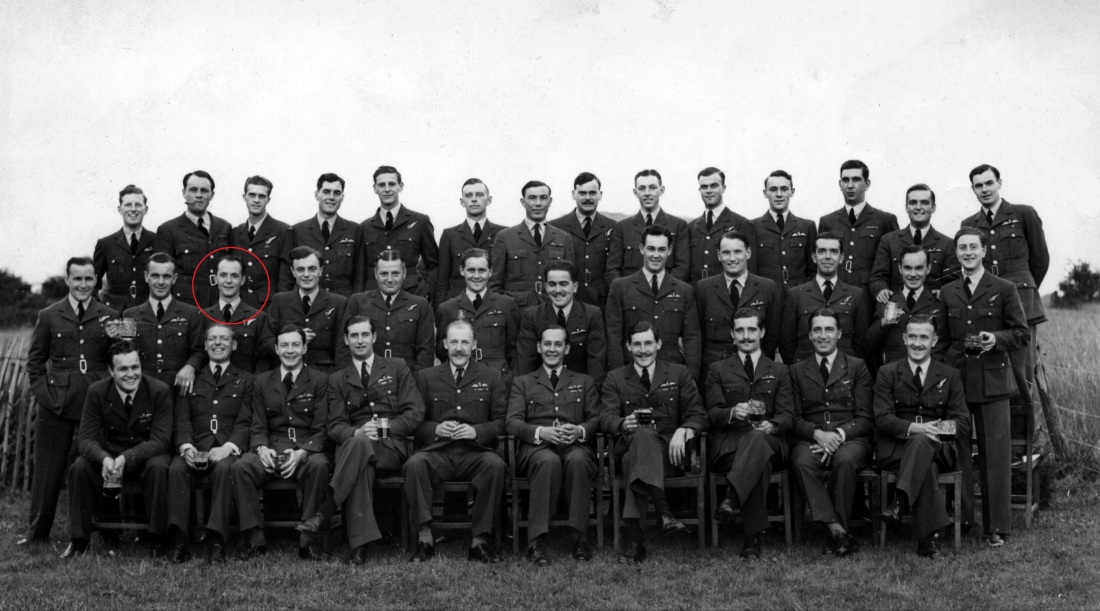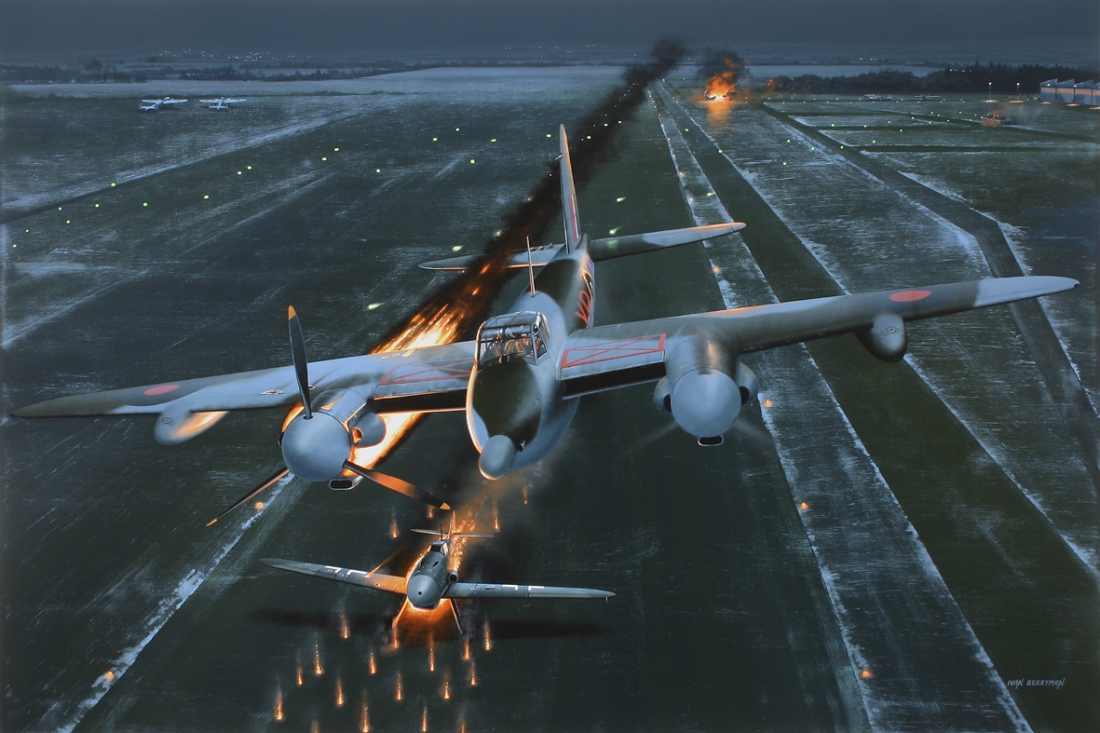This is the e-mail I got from Dai Whittingham.
I can post it here for all to see because I got the go ahead and it is so much interesting to read.
Bonjour Pierre
Thanks for the prompt reply. Bud appears on the screenshot for the Channel 4 film about the Mosquito http://www.channel4.com/programmes/the-plane-that-saved-britain/4od#3551114 and I noted that he was wearing a 23 Sqn tie! I hope to persuade him to attend our next annual dinner.
There is a very good history of 23 Sqn written by Peter Rudd DFC, who was flew Mosquitos with the Sqn in Malta. Peter passed away about several years ago, but his book is called The Red Eagles. I don’t know if it is still in print and my own copy is in temporary store, but there is a copy available on eBay today if you are interested!
While I was commanding RAF Waddington in 2001, I had the pleasure of accompanying Peter and Wg Cdr (retd) Jock Brown to Malta – we flew them in an E-3D Sentry to Luqa, from whence they had both flown in the war. We managed to find Peter’s old digs in Sliema and photographed him on the same front steps that appear in a photo in his book. Both Peter and Jock had their brains thoroughly picked by the curator of the aviation museum at Ta Qali and our visit took rather longer than expected as a result.
We also laid a wreath at the Malta Memorial and visited as many of the Sqn war graves as we could find, including two in Cagliari (Sardinia). I was particularly struck by the stories that emerged from the two of them as the names on the memorials opened memories – as they should – and by the fact that the names were people and faces to them. To us, they were sadly just names. The Cagliari crew were remembered as having come to grief on a single-engine approach.
There was a grave in the Naval and Military cemetery in Valletta of one SAC Penfold (age 21) who had been killed at Luqa – he was marshalling a Mossie and the noise of its 2 Merlins masked the noise of the single Merlin powering a Hurricane up one of the dispersal goat tracks behind him. He didn’t hear it, and the Hurricane pilot couldn’t see him because he was in a tail-dragger and the track was too narrow for the normal weaving. A sad story behind a simple headstone, accident rather than enemy action.
Jock told me a fascinating story of how he had started on the Mossie. He had been posted to 23 from Hurricanes, so knew the engine, but his first sortie was atually from southern England to Gibraltar en route Malta. They weren’t supposed to be at Gib and should have gone to an airfield in North Africa so Jock was called to the CO’s office to explain himself. He and his nav had heard that everyone arriving at Malta had sand-fly fever (true…) and decided they were probably catching it in Africa. OC Gib agreed with him, told him to advise OC Luqa that all his replacements would come via Gib and that he would advise the Air Ministry of same. His 2nd sortie was Gib to Malta, his 3rd was an air test and his 4th was night ops. To clarify, I asked him if he had done a proper conversion to type, and he said ‘no’. I then asked if he had told anyone about it. I will always remember his reply: “Och, no – I might have lost my tour!”
Peter told us an equally hair-raising tale of losing an engine during a night attack on Taranto harbour (not the big raid…). The good engine was overheating and he couldn’t get enough power to climb above 100ft for much of the return leg over the sea. He decided that if he could make 400ft over the Grand Harbour he would be able to close the throttle and glide the rest of the way, which would solve the asymmetric handling problem that had killed several of his friends. At that time nobody had successfully gone around from a poor asymmetric approach in the Mk 1 Mossie. Unfortunately the gliding performance was better than expected and he realised late on that the landing was going to be so long that they would be off the end at high speed with probable fatal consequences. He then said he thought if they were going to die, they might as well die trying, so he gently applied power and lots of rudder. He told me he wasn’t sure how he did it, or whose hands were on the controls, but airspeed and altitude started to increase. The second approach was successful, but he did say he was ready for a beer afterwards.
One other snippet for you (sadly I can’t recall which gent provided it but I think it was Peter) was the use of intelligence. By this stage 23 was doing solo intruder ops and plenty of crews were taking hits from flak. He and his observer used to go through all the other crews’ mission reports, plotted every gun position that was ever mentioned, and then planned routes around them. Simple but effective. They only got shot at once, and that was by a fixed AAA site that had been mis-reported.
The other definite Mossie man in the Association was Fred Hayes, who was an observer; Fred died in 2003. He was great company. I don’t know whether George will remember him.
Thank you for helping to keep the flame burning for No 23 Sqn. Sadly, the Sqn disbanded in Oct 2009 and the reductions in force levels since then means that the numberplate is very unlikely to see RAF service again.
Kind regards,
Dai Whittingham
Click here to view the documentary outside the U.K.

